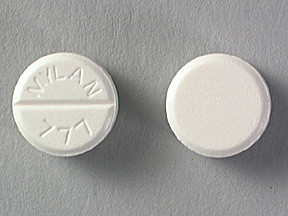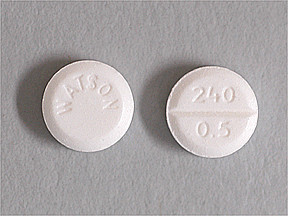LORAZEPAM - ORAL
PHONETIC PRONUNCIATION: (lor-AYE-zeh-pam)
COMMON BRAND NAME(S): Ativan
GENERIC NAME(S): lorazepam
Uses
USES: This medication is used to treat anxiety. Lorazepam belongs to a class of drugs known as benzodiazepines which act on the brain and nerves (central nervous system) to produce a calming effect. This drug works by enhancing the effects of a certain natural chemical in the body (GABA).
How to use LORAZEPAM - ORAL
HOW TO USE: Read the Medication Guide provided by your pharmacist before you start taking lorazepam and each time you get a refill. If you have any questions, ask your doctor or pharmacist. Take this medication by mouth with or without food as directed by your doctor. The dosage is based on your medical condition, age, and response to treatment. If directed by your doctor, use this medication regularly in order to get the most benefit from it. To help you remember, use it at the same time(s) each day. This medication may cause withdrawal reactions, especially if it has been used regularly for a long time or in high doses (more than 1-4 weeks) or if you have a history of alcoholism, drug abuse, or personality disorder. Withdrawal symptoms (such as seizures, trouble sleeping, mental/mood changes, nausea, vomiting, diarrhea, loss of appetite, stomach pain, hallucinations, numbness/tingling of arms and legs, muscle pain, fast heartbeat, short-term memory loss, very high fever, and increased reactions to noise/touch/light) may occur if you suddenly stop using this medication. To prevent withdrawal reactions, your doctor may reduce your dose gradually. Report any withdrawal reactions right away. Though it helps many people, this medication may sometimes cause addiction. This risk may be higher if you have a substance use disorder (such as overuse of or addiction to drugs/alcohol). Take this medication exactly as prescribed to lower the risk of addiction. Ask your doctor or pharmacist for more details. Do not suddenly stop using this drug without consulting your doctor. Some conditions may become worse when this drug is abruptly stopped. Your dose may need to be gradually decreased. When this medication is used for a long time, it may not work as well. Talk with your doctor if this medication stops working well. Tell your doctor if your condition persists or worsens.
Side Effects
Precautions
Interactions
Overdose
Images
Reviews
Faq for LORAZEPAM - ORAL
Lorazepam is used to treat anxiety disorders, insomnia, symptoms of alcohol withdrawal, and certain seizure disorders.
Lorazepam belongs to a class of drugs called benzodiazepines, which work by enhancing the effects of a neurotransmitter called GABA in the brain, resulting in a calming and sedative effect.
Common side effects of Lorazepam may include drowsiness, dizziness, weakness, lack of coordination, headache, nausea, blurred vision, and changes in appetite.
Yes, Lorazepam can be habit-forming if used for a long time or in high doses. It is important to follow the prescribed dosage and duration of treatment to minimize the risk of dependence.
Lorazepam is generally not recommended for use during pregnancy, especially during the first trimester. It may increase the risk of congenital malformations and withdrawal symptoms in the newborn.
The half-life of Lorazepam is about 12 hours, meaning it takes about 2-3 days for the drug to be completely eliminated from the body.
Lorazepam can interact with other medications, including antidepressants, antihistamines, opioids, and certain anticonvulsants. It is important to inform your healthcare provider about all the medications you are taking to avoid potential interactions.
Yes, Lorazepam can be prescribed for short-term treatment of insomnia, although it is generally not recommended for long-term use due to the risk of dependence.
If you miss a dose of Lorazepam, take it as soon as you remember. However, if it is close to the time for your next dose, skip the missed dose and resume your regular dosing schedule. Do not double the dose to make up for the missed one.
Warning
WARNING: Taking lorazepam with opioid medications (such as codeine, hydrocodone) may increase your risk of very serious side effects, including death. To lower your risk, your doctor should have you take the smallest dose of lorazepam that works, and take it for the shortest possible time. Get medical help right away if any of these very serious side effects occur: slow/shallow breathing, unusual lightheadedness, severe drowsiness/dizziness, difficulty waking up.
Disclaimer
IMPORTANT: HOW TO USE THIS INFORMATION: This is a summary and does NOT have all possible information about this product. This information does not assure that this product is safe, effective, or appropriate for you. This information is not individual medical advice and does not substitute for the advice of your health care professional. Always ask your health care professional for complete information about this product and your specific health needs.



No Reviews Yet